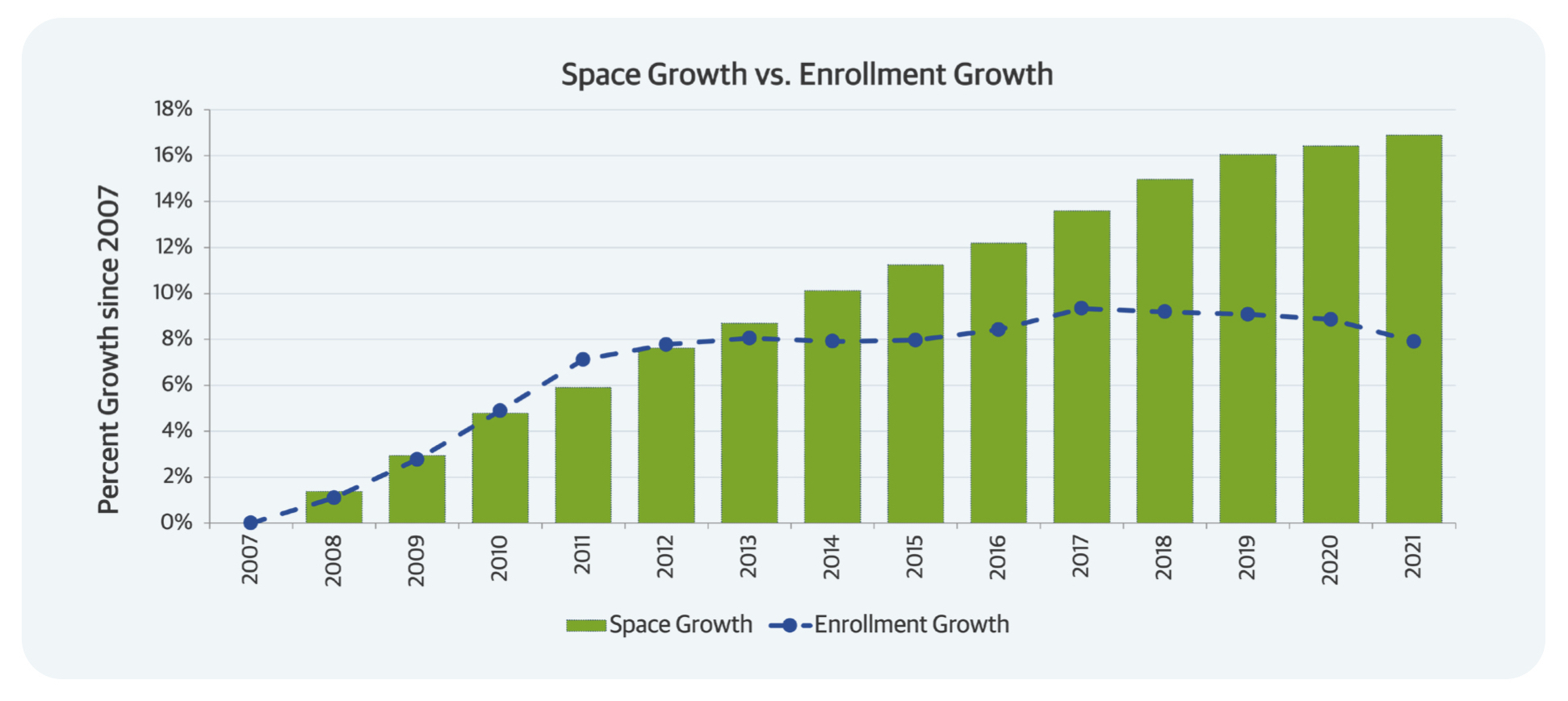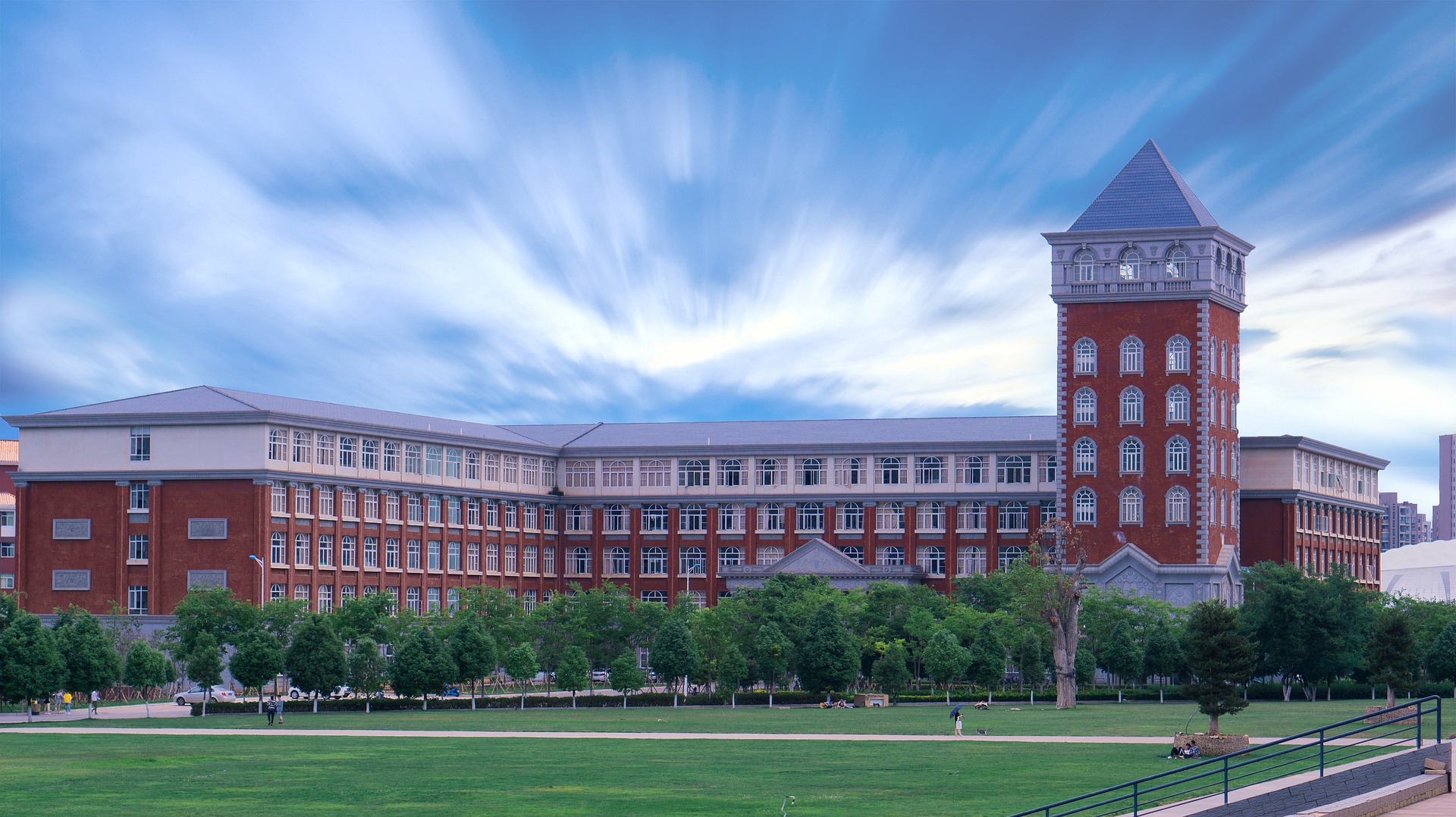Gordian released the 9th edition of the State of Facilities in Higher Education report, which confirms a growing backlog of capital needs and reveals a downturn in operating budgets. Preliminary fiscal year 2021 data shows a year-over-year investment reduction of 19 percent, as major capital projects were slowed or halted, and recurring stewardship expenditures dipped further.
“Across higher education, focused facilities stewardship and capital planning are more critical than ever. The findings from this year’s report further invigorate our mission to help institutions prioritize investments and drive meaningful outcomes within their communities,” says Mark Schiff, President of Gordian.
Throughout the report, Gordian’s database research and its expert insights affirm the following trends that are shifting the higher education landscape:
- Preliminary data warns that the facilities investment shortfall to anticipated demands is approaching 40 percent, accelerating the deferral of projects necessary to steward the campus.
- Gordian’s database shows an average need of $105/GSF at the end of FY20.
- 30 percent of buildings in the Gordian database are in the 10-25-year age group, and the major systems of many of them will soon reach the end of their lives. A convergence of anticipated lifecycle needs for a large portfolio of campus facilities and the well-documented enrollment cliff on the horizon is expected to bear down on higher ed over the next 10-15 years.
- Operating budgets have plunged 9 percent since FY19, and preliminary data for FY21 shows an average workforce reduction of 8 percent.
- Survey results through a partnership with APPA revealed a silver lining — 56 percent of facilities leaders indicated they have greater influence on campus since the pandemic.
This year, data from Gordian’s database of 52,000+ higher ed facilities representing about 300 campuses across North America shows the continuation of familiar trends and some expected changes in response to the pandemic environment. To complement our facilities data with perspectives from the frontline, we partnered with APPA to survey nearly 700 facilities leaders concerning the current pressures they are under and captured the responses in this report.

“Facilities leaders continue to talk about the extent to which their voice has been heard and continues to be heard,” said Pete Zuraw, Vice President of Market Strategy and Development for Gordian. “We want to keep championing your use of that voice to make a difference on your campuses.”
Facilities strategies are at the forefront of the industry’s race to confront its greatest challenge in generations. The report also points to successful case studies and solution frameworks to help institutions plan coherently, leverage technology and invest creatively. These examples and best practices can be fundamental to helping institutions unified around change adapt to today’s problems and create a richer and more viable future.
Download the 9th edition of the State of Facilities in Higher Education report (short registration required).
Related Stories
| Nov 3, 2010
Recreation center targets student health, earns LEED Platinum
Not only is the student recreation center at the University of Arizona, Tucson, the hub of student life but its new 54,000-sf addition is also super-green, having recently attained LEED Platinum certification.
| Nov 3, 2010
Virginia biofuel research center moving along
The Sustainable Energy Technology Center has broken ground in October on the Danville, Va., campus of the Institute for Advanced Learning and Research. The 25,000-sf facility will be used to develop enhanced bio-based fuels, and will house research laboratories, support labs, graduate student research space, and faculty offices. Rainwater harvesting, a vegetated roof, low-VOC and recycled materials, photovoltaic panels, high-efficiency plumbing fixtures and water-saving systems, and LED light fixtures will be deployed. Dewberry served as lead architect, with Lord Aeck & Sargent serving as laboratory designer and sustainability consultant. Perigon Engineering consulted on high-bay process labs. New Atlantic Contracting is building the facility.
| Nov 3, 2010
Dining center cooks up LEED Platinum rating
Students at Bowling Green State University in Ohio will be eating in a new LEED Platinum multiuse dining center next fall. The 30,000-sf McDonald Dining Center will have a 700-seat main dining room, a quick-service restaurant, retail space, and multiple areas for students to gather inside and out, including a fire pit and several patios—one of them on the rooftop.
| Nov 1, 2010
John Pearce: First thing I tell designers: Do your homework!
John Pearce, FAIA, University Architect at Duke University, Durham, N.C., tells BD+C’s Robert Cassidy about the school’s construction plans and sustainability efforts, how to land work at Duke, and why he’s proceeding with caution when it comes to BIM.
| Oct 13, 2010
Editorial
The AEC industry shares a widespread obsession with the new. New is fresh. New is youthful. New is cool. But “old” or “slightly used” can be financially profitable and professionally rewarding, too.
| Oct 13, 2010
Campus building gives students a taste of the business world
William R. Hough Hall is the new home of the Warrington College of Business Administration at the University of Florida in Gainesville. The $17.6 million, 70,000-sf building gives students access to the latest technology, including a lab that simulates the stock exchange.
| Oct 13, 2010
Science building supports enrollment increases
The new Kluge-Moses Science Building at Piedmont Virginia Community College, in Charlottesville, is part of a campus update designed and managed by the Lukmire Partnership. The 34,000-sf building is designed to be both a focal point of the college and a recruitment mechanism to get more students enrolling in healthcare programs.
| Oct 13, 2010
Residences bring students, faculty together in the Middle East
A new residence complex is in design for United Arab Emirates University in Al Ain, UAE, near Abu Dhabi. Plans for the 120-acre mixed-use development include 710 clustered townhomes and apartments for students and faculty and common areas for community activities.
| Oct 13, 2010
New health center to focus on education and awareness
Construction is getting pumped up at the new Anschutz Health and Wellness Center at the University of Colorado, Denver. The four-story, 94,000-sf building will focus on healthy lifestyles and disease prevention.
| Oct 13, 2010
Community college plans new campus building
Construction is moving along on Hudson County Community College’s North Hudson Campus Center in Union City, N.J. The seven-story, 92,000-sf building will be the first higher education facility in the city.
















